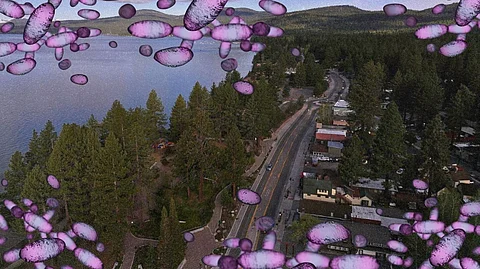
- NEWS
- the EDIT
- COMMENTARY
- BUSINESS
- LIFE
- SHOW
- ACTION
- GLOBAL GOALS
- SNAPS
- DYARYO TIRADA
- MORE

A Lake Tahoe resident has tested positive for the plague, reviving public concern over a disease often thought to exist only in history books. California health officials confirmed Tuesday that the individual likely contracted the illness after being bitten by an infected flea while camping in South Lake Tahoe.
The patient is now recovering at home and under medical care, according to El Dorado County officials.
“Plague is naturally present in many parts of California, including higher elevation areas of El Dorado County,” said Kyle Fliflet, El Dorado County’s acting director of public health. “It’s important that individuals take precautions for themselves and their pets when outdoors, especially while walking, hiking and or camping in areas where wild rodents are present.”
While cases are rare, the plague continues to resurface in parts of the United States. The last recorded case in El Dorado County occurred in 2020, also traced to the South Lake Tahoe area. Earlier instances included two visitors to Yosemite National Park in 2015, who were exposed through infected rodents or fleas. Both survived, as did all other California patients reported since 2006.
The disease is not confined to California. In July 2024, a human case was confirmed in Pueblo County, Colorado. A child also died from the illness in the state in 2021, underscoring its persistent though uncommon presence in the region.
The plague is caused by the bacterium Yersinia pestis, which infects humans and other mammals. Flea bites from infected rodents are the most common route of transmission, though contact with sick animals can also spread the germ.
Among the animals that may carry plague bacteria are rats, mice, voles, ground squirrels, rabbits, prairie dogs, and chipmunks. Household pets such as cats and dogs, along with wild predators like coyotes and wildcats, can also become infected if they eat smaller animals carrying the disease or pick up their fleas.
Plague symptoms differ depending on the form contracted.
Bubonic plague, the most common type, is characterized by swollen lymph nodes known as buboes, which may appear in the armpits, groin, or neck. They can range in size from less than half an inch to as large as four inches. Accompanying symptoms often include high fever, chills, headaches, fatigue, weakness, and muscle aches.
Septicemic plague, a more severe form, occurs when the bacteria multiply in the bloodstream. In these cases, swollen lymph nodes may not appear, making the illness harder to identify early.
Health officials stress that the risk to the general public remains very low. Still, the recent case serves as a reminder that the plague, while ancient, is not gone. Outdoor visitors are advised to avoid contact with rodents, use insect repellent, and keep pets away from wildlife.
The disease may no longer devastate populations as it did in centuries past, but its continued appearance underscores the need for vigilance.
